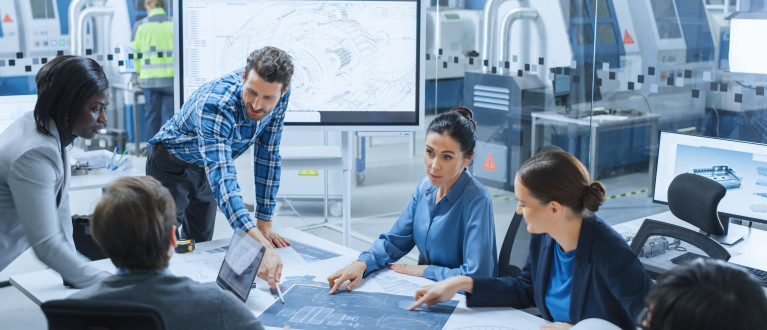Extra attention required for VAT for cross-border delivery of goods with installation or assembly
Different sectors, such as transport and logistics, automotive, food, agriculture or technology, use various machines. It may concern food machines for production lines or castor decks and roller decks that are used in logistics hubs or at package processors, or robotic arms in, for example, the automotive industry, cooling and ventilation systems, but also storage systems such as warehouse racks.

Due to the strong position of Dutch companies in these sectors, the companies are almost never only nationally oriented. In fact, most companies operate both within and outside the EU. The globalization of this market will increase in the coming years. They are engaged by clients not only to deliver the machines that have been developed, often in the client's country, but also to install or assemble them at the customer's premises. For VAT purposes, these deliveries with installation or assembly are referred to as 'installation supplies' or 'assembly supplies'. This is also important for you as a foreign entrepreneur when you install or assemble goods in the Netherlands.
Delivery of goods with installation or assembly are not always taxed with VAT in the Netherlands
When a Dutch entrepreneur in the Netherlands delivers goods with installation or assembly, the delivery of the machine together with the installation or assembly is taxed in the Netherlands with 21% VAT. However, if the machine is delivered and installed in another European country, for example Belgium or Germany, then Dutch VAT is no longer applicable. For European VAT, this transaction is then taxed in the country where the installation or assembly of the delivered machines takes place. Such transactions within the EU must be declared in Section 3c, a special section on the VAT return. For installation or assembly deliveries outside the EU, these do not appear at all on the Dutch VAT return.
For example, a German entrepreneur delivers a number of machines in the Netherlands on behalf of a Dutch customer and assembles them in the warehouse of his Dutch customer. In concrete terms, this means that the German entrepreneur has a registration obligation with the Dutch tax authorities. The German entrepreneur must pay VAT in the Netherlands. The entrepreneur must therefore send his customer an invoice with Dutch VAT.
Application of the reverse charge mechanism
Sometimes it is possible to make use of a national reverse charge mechanism in the country of the customer. The German entrepreneur does not have to register in the Netherlands, but can transfer VAT to his Dutch customer. These reverse charge mechanisms are very specific and different in all European countries. The various European countries do not apply these reverse charge mechanisms in a uniform manner. In addition, some countries do not have a reverse charge mechanism.
Reverse charge of VAT is not always possible
Often these reverse charge arrangements cannot be applied if the customer is not established or registered for VAT purposes in the customer's country. For example, a Dutch entrepreneur who delivers and installs machines (or other goods) in Italy on behalf of a Spanish entrepreneur. In this case, the Dutch entrepreneur cannot make use of the Italian reverse charge mechanism, because it is not possible in Italy to reverse charge Italian VAT to a party not established in Italy.
Preparation is essential
In many cases, you can reverse charge VAT to the customer. You need to plan for this, so that possible additional costs in the quotations and contracts can be taken into account. To determine whether a reverse charge mechanism can be invoked in the customer's country, the VAT legislation of that country must be consulted. Entrepreneurs should be especially aware of the fact that not every delivery of goods with installation or assembly is also an installation or assembly supply for VAT. That is why it is important to analyse the contracts in time to qualify the transaction. Sometimes, for VAT purposes, it is not an installation or assembly supply, but only a delivery of goods or services. This can be complex in practice and needs to be reviewed by an expert.
Risks are great
Due to the ever-increasing exchange of data and checks, sooner or later entrepreneurs who do not comply with these rules will be addressed by the foreign tax authorities. This may be part of an audit at the customer, but tax officials are also increasingly investigating large projects. By proactively identifying these problems, this can be dealt with in advance. In many cases it is not even necessary to register in the country of the customer.
Consult our specialists
Please keep an eye on our website or contact Anne Kin, international VAT specialist, at telephone number +31135915125 or send Anne an e-mail.




